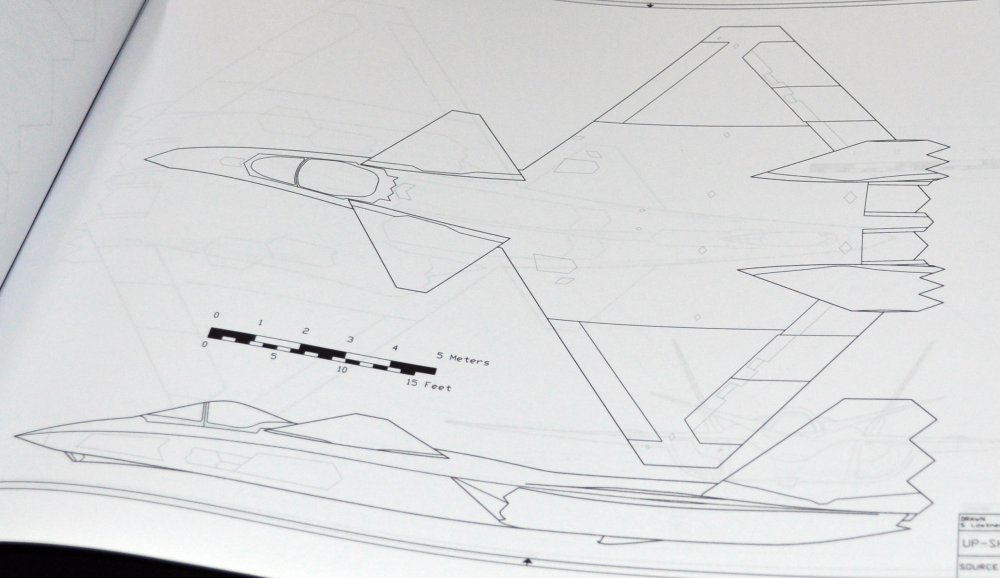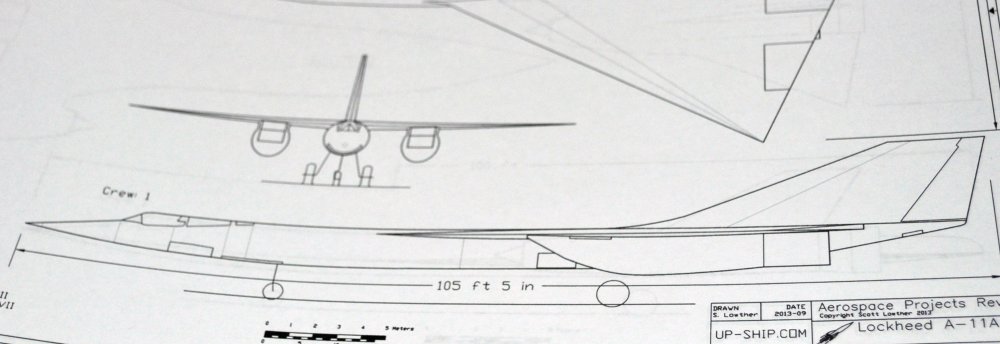Status, via photos and screenshots, of various model projects I’m working on.
What you call a “slow news day:”
Converted Ballistic Missiles Could Launch Aid to Disaster Zones
Before anyone gets too worked up, this idea springs not from some tax-dollar-spewing government think-tank, but from a grad student in Tokyo.
The idea: a natural disaster strikes the Middle of Nowhere. Ships will take forever to get there; planes can’t. So… put medicine, electrical generators, whatever, onto the fronts of decommissioned ICBMs and launch into the disaster zone. Supplies can be on-site in an hour or less. One one hand… sure, you could do that. On the other hand… ah… no.
1) Launching ICBMs can make other nations twitchy.
2) ICBMs, even decommissioned ones, are *expensive* and the payloads are small.
3) How good is your targetting? And is a generator falling out of the sky what the people on the ground really need?
4) Airplanes can be there in a few hours. If they can’t land – rough terrain, no runways, etc. – they can always do the Berlin Air Lift Candy Bomber thing and chuck relief supplies out the back under parachute.
Personally, my biggest issue is #2. Unless your Intercontenental Ballistic Package Delivery System is kept in a state of constant readiness – and that’ll cost a lot – it’s going to take a long time to get it ready to launch. So ICBMs just seem a poor choice here. However… there is a forthcoming alternative: rocketplanes.
The likes of XCOR’s “Lynx” suborbital rocketplane will, if it works out, turn out to be a vehicle with performance that at least kinda-sorta approximates ICBMs, and will by definition be kept in a virtually constant state of readiness, and will by definition be relatively cheap. Lynx is rather small, of course, and on its own couldn’t carry much very far; but put an upper stage on it, as XCOR plans to do, and you can put a payload into orbit… or halfway across the planet. Does this make economic and logistical sense? Well… still, probably “no.” But I think it makes less un-sense than expending an ICBM. And Lynx will, hopefully, be just the first, small generation; follow-on craft will be bigger and more capable. I can imagine that a successful suborbital tourism rocketplane might lead to a 737-sized suborbital transport rocketplane, carrying a few dozen passengers across oceans in a matter of minutes; this sort of vehicle would, with the aid of a simple pop-up stage, be able to toss quite a payload of band-aids at a disaster zone.
Of course, if such a system becomes available, it’ll still need to be kept in a state of readiness. And how best to do that? By constant operations. Going on a century ago, a lot of people were sure that the future of rocketry was bound up in postal rockets… shooting mail across the miles via rocket. That of course didn’t work out, and it likely wouldn’t work out today; in the era of email, there’s just not enough mail to justify it. But you know what we’re not going to run out of anytime soon? Crazy people. Any rocketplane-based suborbital payload delivery system that can send a meaningful disaster-recovery payload across the planet can also fire quite a number of high-paying adrenaline junkies out into space. Not in a capsule, mind you, but in little more than space suits. Lob ’em up there in a pop-up stage that looks like any conventional upper stage… rockets and tankage to the rear, cylinder-cone payload shroud at the front, with the passengers sitting inside the shroud as if they were in a bus. As the people-pod exits the atmosphere, blow the “top” off the shroud (or have it split and fold aside) so that the passengers are now sitting in a “convertible,” exposed to space. Then let ’em jump… to continue to ascend, hit apogee and then descend, re-enter and come down on chutes. You *know* that there would be a line around the block for spacediving. This would spur innovations in astronaut maneuver systems, as the spacedivers would want simple and reliable maneuver capability so that they could link up like parachutists do, as well as drive innovations in *cheap* space suits. The upper stage would be recoverable and resuable; probably coming down on chutes. But install bigger chutes, and it could come down loaded with bandaids, meds, generators and perhaps even a doctor or two (presumably wearing space suits and yelling “XTREME!” all the way down.)
Back to the original idea: it’s not new. Not by a long shot. In the late 1950’s the US Army studied using the Redstone rocket as a battlefield cargo delivery system, lobbing weapons and ammo at Our Boys; they even examined launching Our Boys with the Redstone and Jupiter missiles. This led to the Douglas ICARUS concept… a modified Single Stage to Orbit launcher meant to fire 1,200 fully-armed Marines across the planet. More on all these ideas HERE. None of these were ever built.
This Boeing artwork depicts the late-1970’s concept for a receiver station on Earth for the energy transmitted from an orbiting solar power satellite. The SPS would convert sunlight into electricity, and then into a tightly collimated beam of microwaves; this would be captured at ground level by a vast receiver. Since microwaves are fairly easily captured, the receiver would appear as not a whole lot more than a vast elliptical field of chickenwire. Sunlight, wind and rain would pass right through it, thus the underside, as the painting depicts, could be conventional farmland.
Most of the time I’ve seen this painting reproduced it has been black and white; this rendering, scanned from Gatland’s “Space Technology,” is the only one I know of in color. Anyone have the full-rez version?
The ebay listings for the F-23 derivatives, Lockheed Archangels and A-12 Avenger II diagram booklets will end Sunday… 13 hours from this writing. Bid now! Bid often! Bid insanely high! Bid like this is a mafia money laundering operation!
Another space-based anti-missile system contemplated for the Strategic Defense Initiative was the neutral particle beam. Specifics are exceedingly thin as befits a concept that sounds a *lot* like science fiction.
In practice, the system is a particle accelerator that ionizes hydrogen atoms, grabs them with massively powerful magnetic fields and accelerates them to near light speed. At the end o the weapon, extra electrons are stripped from the atoms, making the hydrogen atoms electrically neutral. This makes them largely impervious to natural and artificial magnetic fields, so they go where you aim ’em and can’t be readily shielded against. However, atmosphere rapidly scatters the beam, so space basing is really the only option. Unlike a laser beam, a mirrored surface would not faze a neutral particle beam. In fact, much of the damage would be done *within* the target, as the hydrogen atoms would penetrate some distance before being stopped and depositing their kinetic energy as heat.
Most of the artist impressions of NPB weapons that I recall showed U-shaped accelerators. By folding the accelerator in half, the spacecraft would be more compact. The energy requirements meant that nuclear powerplants were needed, but the power requirements – billions of Watts for a tiny fraction of a second – would make the power storage and supply issue entertaining. If that issue is cleared up, firing rates of perhaps thousands of shots per second would be possible.
Heres a terrible-quality image of unknown origin, but shows the basic idea:
Another illustration, credited to Los Alamos National Lab. Note that what at first glance appears to be solar panels is actually transparent; these are either the result of severe artistic license or depict not solar panels but radiators.
I’ve seen virtually nothing to judge the scale of these systems, but there were multiple references to NPB weapons being very large systems requiring numerous launches and considerable on-orbit assembly. Studies in the early 1990’s indicated that operational NPB weapons would probably not be feasible before 2025.
During Reagan’s “Star Wars” days, concept art of space-based anti-missile systems were cranked out on a fairly regular basis. Much of it was, most likely, pure artistic license with little basis in reality. However, some of the weapon artwork was clearly based on actual engineering, such as the Zenith Star and Brilliant Pebbles programs.
One uncertain design is shown in the painting below. It represents a space-based railgun, apparently capable of firing projectiles at high speed in rapid succession. While attributed to the DoD, the vehicle has “Boeing” painted on it. Unlike a lot of the designs, this one at least has a sufficiency of attitude control thrusters. Power for the system is probably nuclear, with the reactor on the far right, surrounded by conical radiators.
Seems it’d make a nifty display model.
Interesting:
Stratolaunch quietly making progress
It seems they’re gearing up a manufacturing facility in Mojave to build the large twin-fuselage carrier aircraft, with a planned first test flight in 2016. Photos of display models of the carrier aircraft and the orbital vehicle at the link.
I’ve put a few sets of 11X17 diagrams on eBay:
Northrop F-23 predecessor and derivatives diagram booklet
Lockheed Archangel Diagram booklet (SR-71 predecessor designs)
McDonnell-Douglas/General Dynamics A-12 Avenger II Diagram Booklet
I don’t really know if these’ll do at all well on eBay, but what the heck. I’m hoping they might serve as a bit of advertising, though. The Archangel set is very likely a one-off, a result of the printer actually spitting out two copies rather than one.
For those of you who were generous a good long while ago and have been wondering “what the hell?!?!” the technology and techniques I’ve been developing and requiring recently will prove relevant.




















